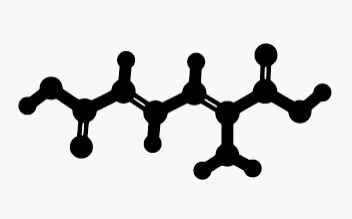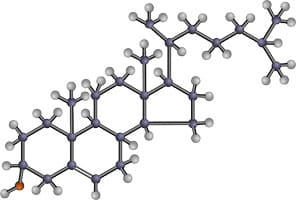 The notion of organic compound refers to a substance that contains carbon . A compound is something made up of two or more elements; The organic , meanwhile, refers to that which presents carbon as a component and that is part of a living being.
The notion of organic compound refers to a substance that contains carbon . A compound is something made up of two or more elements; The organic , meanwhile, refers to that which presents carbon as a component and that is part of a living being.
Before moving forward with these ideas , it is important to stop at the definition of carbon. This is the name given to the chemical element whose symbol is C and its atomic number is 6 , which is widely deployed in nature and has enormous biological significance.
Organic compounds, in short, have carbon. They can also have nitrogen , phosphorus , oxygen and other elements. They are generally produced naturally, although there are artificial organic compounds that are generated through chemical synthesis .
In this way, organic compounds (also known as organic molecules ) can be divided into natural or artificial . Natural organic compounds are called biomolecules and are those that living beings synthesize, such as vitamins and proteins. Artificial organic compounds , meanwhile, are manufactured by humans and do not exist in nature, like plastics.
All organic compounds share the fact that they have carbon as a central component. Carbon molecules join together very easily in chains that can take various shapes and reach different lengths.
It is important to note that, because carbon atoms have a valence of 4 and can establish double or triple bonds , they are able to form very complex organic compounds.
Without a very defined criterion , it is possible to classify organic compounds into aliphatic, aromatic, heterocyclic, organometallic and polymeric . The former are also known as aliphatic hydrocarbons and are made up of hydrogen and carbon. If its chain takes the shape of a ring then it is called acyclic , while otherwise we should speak of cyclic . Of the first group, the simplest are the alkanes; of the second, however, the cycloalkanes.
 With respect to aromatic organic compounds, we can say that they are those that have at least one ring with pi bonds (two lobes of one orbital overlap with two of another) that are delocalized around them. Note that aliphatic compounds do not have such delocalization. Their name refers to the fact that many of them exhibit a pleasant or sweet aroma, and were assigned to them before scientists understood the physical mechanism behind this phenomenon .
With respect to aromatic organic compounds, we can say that they are those that have at least one ring with pi bonds (two lobes of one orbital overlap with two of another) that are delocalized around them. Note that aliphatic compounds do not have such delocalization. Their name refers to the fact that many of them exhibit a pleasant or sweet aroma, and were assigned to them before scientists understood the physical mechanism behind this phenomenon .
Heterocyclic organic compounds, on the other hand, are those in which each atom that is part of the cycle belongs to two or more different elements. With respect to the elements that compose it, at least we can find carbon atoms accompanied by a different one, which are usually sulfur, oxygen or nitrogen and are known as heteroatoms . According to the number of unsaturations per cycle they can be classified as saturated and unsaturated .
On the other hand, organometallic compounds are those that exhibit covalent bonds between carbon atoms and metal atoms, whether single, double or triple , with variable polarity . It is worth mentioning that metallic elements can also be non-metals or metalloids . In any case, no matter which of these three types of elements are included in an organometallic compound, they will always have a lower electronegativity value than carbon.
The last place in the classification of organic compound is occupied by the polymer , a substance that includes macromolecules of units called monomers linked by covalent bonds. Broadly speaking , synthetic ones (polyethylene and other plastics) can be distinguished from natural ones (proteins, DNA) , but all of them play an important role in various aspects of our lives.
